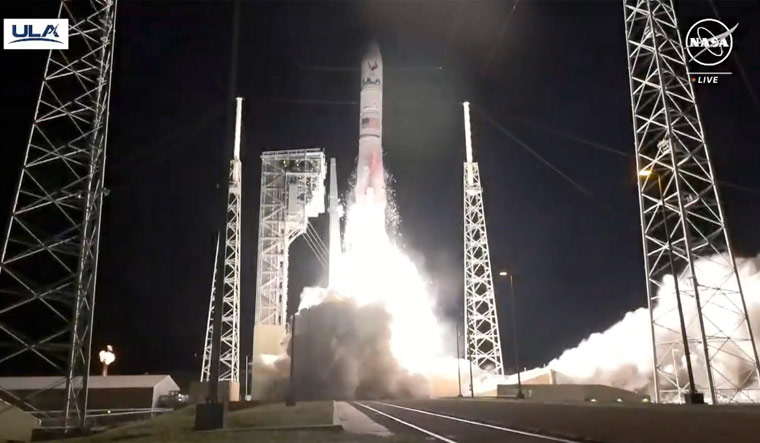The Nasa Peregrine 1 mission, also known as the Peregrine Lunar Lander, has been successfully launched. This mission marks NASA's first moon lander mission since the Apollo program. The launch took place on January 8, 2024, at 2:18 am EST (12:48 pm IST) from Cape Canaveral, Florida, aboard a Vulcan Centaur launch vehicle provided by United Launch Alliance (ULA).
The Peregrine Mission One aims to deliver scientific and technological payloads to the Moon. The lander carries multiple payloads with a total payload mass capacity of 90 kg. The scientific objectives of the mission include studying the lunar exosphere, thermal properties and hydrogen abundance of the lunar regolith, magnetic fields, and the radiation environment . Additionally, the mission will test advanced solar arrays .
The Peregrine lander is targeted to land on February 23 at Sinus Viscositatis, a lunar feature outside of the hardened lava Gruithuisen Domes on the near side of the Moon This landing site is of particular interest as similar natural structures on Earth require large volumes of water to form, leading scientists to believe that evidence of water may be present at this location.
The mission carries a suite of payloads provided by NASA. These payloads include:
LETS (Linear Energy Transfer Spectrometer): A radiation monitor that will collect data on the lunar radiation environment and demonstrate the capabilities of the radiation monitors on the lunar surface.
NIRVSS (Near-Infrared Volatile Spectrometer System): This payload will reveal the composition, surface temperature, and fine-scale structure of the lunar soil at the landing site. It will study the lunar soil and detect the presence of minerals and volatiles.
NSS (Neutron Spectrometer System): This instrument will indirectly detect potential water present in the lunar soil at the landing site. It will measure any changes in the characteristics of the lunar soil over the course of a lunar day.
PITMS (Peregrine Ion-Trap Mass Spectrometer): This payload will investigate the makeup of compounds in the thin lunar atmosphere after descent and landing. It will help understand the release and movement of volatiles such as water, gases, and other chemical compounds.
LRA (Laser Retroreflector Array): This collection of eight retroreflectors will enable precise measurements of the distance between the orbiting or landing spacecraft and the lander. It will function as a permanent location marker on the Moon.
These payloads will provide valuable data to enhance our understanding of the lunar environment and support future missions to the Moon.



